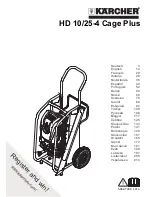
8
For successful stain removal:
•
Remove stains promptly.
•
Determine the kind of stain, then follow the recommended treatment in
the stain removal chart below.
•
To pretreat stains, use a prewash product, liquid detergent, or a paste made
from granular detergent and water.
•
Use cold water on unknown stains because hot water can set stains.
•
Check care label instructions for treatments to avoid on specific fabrics.
•
Check for colorfastness by testing stain remover on an inside seam.
•
Rinse and wash items after stain removal.
STAIN
Adhesive tape, chewing gum,
rubber cement
Baby formula, dairy products,
egg
Beverages (coffee, tea, soda,
juice, alcoholic beverages)
Blood
Candle wax, crayon
Chocolate
Collar or cuff soil, cosmetics
Dye transfer on white fabric
Grass
Grease, oil, tar (butter, fats,
salad dressing, cooking oils,
car grease, motor oils)
Ink
Mildew, scorch
Mud
Mustard, tomato
Nail polish
Paint, varnish
Perspiration
Rust, brown or yellow
discoloration
Shoe polish
Urine, vomit, mucus, feces
Apply ice. Scrape off excess. Place stain face down on paper towels. Saturate with prewash stain remover or
nonflammable dry cleaning fluid.
Use product containing enzymes to pretreat or soak stains. Soak for 30 minutes or more. Wash.
Pretreat stain. Wash using cold water and bleach safe for fabric.
Rinse with cold water. Rub with bar soap. Or, pretreat or soak with product containing enzymes. Wash using bleach
safe for fabric.
Scrape off surface wax. Place stain face down between paper towels. Press with warm iron until wax is absorbed.
Replace paper towels frequently. Treat remaining stain with prewash stain remover or nonflammable dry cleaning
fluid. Hand wash to remove solvent. Wash using bleach safe for fabric.
Pretreat or soak in warm water using product containing enzymes. Wash using bleach safe for fabric.
Pretreat with prewash stain remover or rub with bar soap.
Use packaged color remover. Wash using bleach safe for fabric.
Pretreat or soak in warm water using product containing enzymes. Wash using bleach safe for fabric.
Scrape residue from fabric. Pretreat. Wash using hottest water safe for fabric. For heavy stains and tar, apply
nonflammable dry cleaning fluid to back of stain. Replace towels under stain frequently. Rinse thoroughly. Wash using
hottest water safe for fabric.
Some inks may be impossible to remove. Washing may set some inks. Use prewash stain remover, denatured alcohol
or nonflammable dry cleaning fluid.
Wash with chlorine bleach if safe for fabric. Or, soak in oxygen bleach and hot water before washing. Badly mildewed
fabrics may be permanently damaged.
Brush off dry mud. Pretreat or soak with product containing enzymes.
Pretreat with prewash stain remover. Wash using bleach safe for fabric.
May be impossible to remove. Place stain face down on paper towels. Apply nail polish remover to back of stain.
Repeat, replacing paper towels frequently. Do not use on acetate fabrics.
WATER BASED: Rinse fabric in cool water while stain is wet. Wash. Once paint is dry, it cannot be removed. OIL BASED
AND VARNISH: Use solvent recommended on can label. Rinse thoroughly before washing.
Use prewash stain remover or rub with bar soap. Rinse. Wash using nonchlorine bleach in hottest water safe for fabric.
For spots, use rust remover safe for fabric. For discoloration of an entire load, use phosphate detergent and
nonchlorine bleach.
Do not use chlorine bleach because it may intensify discoloration.
LIQUID: Pretreat with a paste of granular detergent and water. PASTE: Scrape residue from fabric. Pretreat with
prewash stain remover or nonflammable dry cleaning fluid. Rinse. Rub detergent into dampened area. Wash using
bleach safe for fabric.
Pretreat or soak in product containing enzymes. Wash using bleach safe for fabric.
TREATMENT
Stain Removal
Follow fabric care label instructions.
































